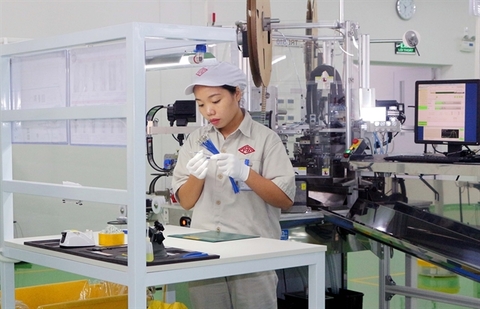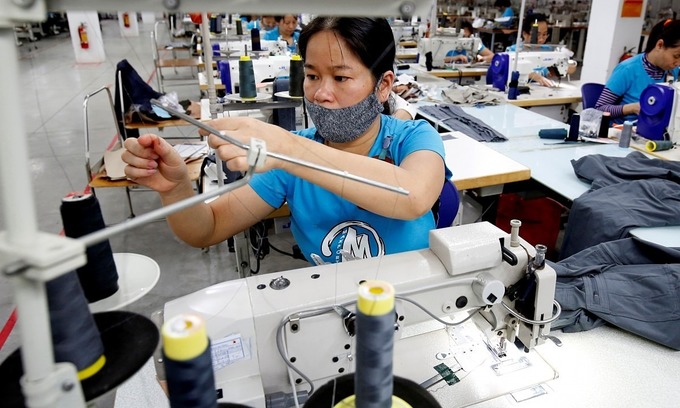Becamex IDC industrial park plans gather pace
Becamex IDC industrial park plans gather pace
Becamex IDC Corporation, the leading group in the southern province of Binh Duong, is continuing its work towards establishing both a science and hi-tech industrial park and a special railway, which will provide the foundations for developing the province into a smart city with increased labour capacity and more added value.At the Southern Key Economic Zone Development Conference held several months ago, Nguyen Van Hung, chairman of Becamex IDC, announced that the company has proposed to the Binh Duong authorities a plan to build a sci-tech industrial park (STIP).
“The construction of this STIP is one of the key projects in a plan to build Binh Duong into a smart city. This project was inspired by South Korea’s Daejeon, Eindhoven in the Netherlands, and many other smart cities across the world,” said Hung.
“This is a new model and the project’s success could lead to significant benefits for the southern key economic zone. In the future Binh Duong will gradually become a comprehensive hi-tech ecosystem and a centre of knowledge, first for the region and then for the whole country,” he added.
Plans for a sci-tech park and new rail network in the area have been bubbling away for years, but more concrete details have begun to emerge.
The construction of this incarnation of an STIP aims to attract business groups, small- and medium-sized enterprises, and startups in key manufacturing sectors which can bring about high added-value products suitable to the current development trend.
It will also cover research and development, and experiments in science and technology. It will offer a connection between institutes and enterprises throughout Vietnam and the world, eventually becoming an education centre attracting high-tech human resources, and providing studies, research activities, and tech transfer.
The park will be built with the use of the format of an urban area and will deliver an ideal living environment for active and innovative experts, engineers, and scientists. The STIP is expected to be built at Bau Bang commune, with a total area of 900 hectares. This is an ideal location as it neighbours two major routes connecting Binh Duong to Ho Chi Minh City – National Highway 13 and the My Phuoc-Tan Van route.
Ho Chi Minh Highway also passes around this area, and could easily connect Binh Duong with the adjacent province of Binh Phuoc and other Central Highlands provinces.
Other technical facilities such as power supply and high-speed transformation will be built to a high standard in order to have enough capacity to meet increasing demand of enterprises who will enter the STIP when it is open for tenants.
Sustainable changes
The STIP will offer perfect conditions for business groups and a comfortable living area with sporting facilities and a cultural and entertainment area for residents. The park will also include a working space and data research centre, laboratories, and design studios for its tenants.
According to consultants from the Netherlands, Singapore, and Japan, in order to be able to set up a steady foundation for the sustainable development of Binh Duong, the province’s economic structure must change from labour intensive to higher value-added sectors, based on technologies and knowledge.
Therefore, the proposal to set up a STIP in Binh Duong aims to promote development of the northern area of the province with expanding high-value sectors, a focus on R&D technologies, and human resources, as well as a big improvement in living standards and people in the area.
According to a Becamex IDC representative, the company plans to complete its feasibility study and receive approval from Binh Duong People’s Committee before officially setting up the STIP.
Becamex IDC is currently working with other partners operating in high technologies and infrastructure system developers. It is expected that a semiconductor manufacturing factory will be one of the STIP’s first tenants.
As the developer of the STIP, Becamex IDC will meet with local authorities and map out incentives and favourable conditions for attracting tenants to this project, both from inside and outside the country.
Special railway route
According to enterprises and investors, one concerning issue which impacts their products’ price and labour capacity is the cost of transporting materials and products between industrial zones (IZs) and ports.
Logistics expenses in Vietnam currently account for nearly 21 per cent of GDP. This figure is much higher than those from European countries (10 per cent), Japan (11 per cent), or even Thailand (18 per cent).
The high logistics cost is one of the biggest factors hindering the competitiveness of Vietnamese enterprises and investors.
Some 70 per cent of cargo transportation from IZs to Binh Duong’s ports and many other southern key economic areas now takes place via the road network. This has resulted in problems such as traffic jams and accidents, and has led to a remarkable downturn in competitiveness.
According to a recent report, it takes from eight to 10 hours to shift a container from Binh Duong to Ho Chi Minh City by truck. Meanwhile, transporting the same container would take around two hours by train.
However, Hung has had a solution to this. “One of the most important ways of connecting areas of the southern key economic zones is by improving the logistics services and setting up a supply chain within the region, so as to increase connections and competitiveness in the international market,” said Hung.
“We propose setting up a special railway route to transport cargo between Binh Duong and the southern key economic region, to solve this issue,” he added.
Alongside the railway, there will be a logistics centre and warehouse set up to save time and transport expenses for enterprises, cut traffic jams and accidents, and protect the environment by reducing pollution.
This project is expected to be implemented in conjunction with already-approved existing plans to improve the rail network of Ho Chi Minh City and its neighbouring areas.
When built, this railway will be a total length of 100km and directly connect the IZs of Binh Duong to ports in the nearby provinces of Ba Ria-Vung Tau and Dong Nai, and Ho Chi Minh City.
There will be three large scale logistics centres around the STIP in Bau Bang commune, VSIP 2, and Thai Hoa IZ. Those centres will also receive and distribute cargo for other nearby IZs.
The railway will help create more favourable conditions for enterprises and investors to transport their cargo. It will also ease the pressure on the road transport system within the southern key economic region.
“Experience from other countries tells us that this project is feasible and effective for regional connection,” said another representative from Becamex IDC.
According to him, putting this proposed railway into operation needs direct support from government and local authorities, mostly for land clearance and compensation, investment capital, and incentives in order to encourage investors in logistics development.
















